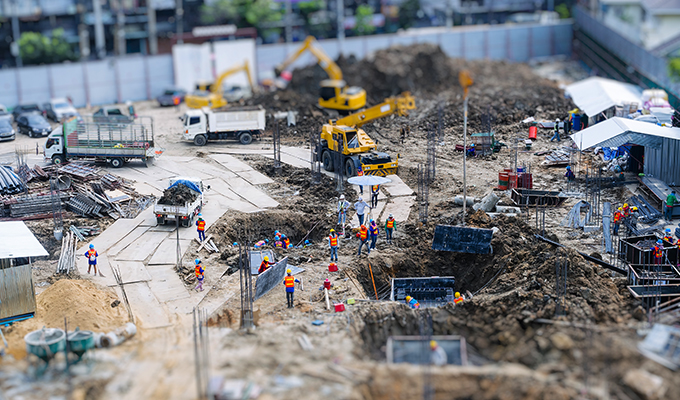Choosing the right tool for the job is essential in construction. The equipment you use can considerably impact your productivity, safety, and expenses, and these factors aren’t always obvious. While specific needs vary, one of the best items to use is construction air tools.
While air tools are common throughout the industry, many teams still rely on electric or gas options. Switching to pneumatic equipment instead could yield several benefits across virtually any worksite. Here are five reasons to use air tools.
HIGH POWER-TO-WEIGHT RATIOS
The most straightforward advantage of construction air tools is their high power-to-weight ratio. Not all of the listed wattage will go toward an electric tool’s actual power output. Some of the electricity goes to other parts of the machine or is wasted, resulting in lower-than-expected output.
By contrast, pneumatic tools deliver power more directly. A 1-horsepower air tool will deliver 1 hp. This results in pneumatic equipment delivering more punch in a smaller package.
Since these tools have higher power-to-weight ratios, they can take up less space, making them more maneuverable. They also improve efficiency, as you can accomplish the same task in less time if your tool delivers more power.
SAFETY
Air tools are also typically safer than their electric counterparts. Part of that stems from their superior power-to-weight ratios. Higher efficiency translates into workers using them for shorter periods, helping avoid repetitive strain injuries. Considering 60% of on-site construction professionals have musculoskeletal disorders, that advantage is hard to ignore.
Since pneumatic equipment uses compressed air instead of electrical power, it also removes electricity-related hazards. These tools operate at a lower temperature, preventing burns from hot equipment. Workers also don’t have to worry about shock hazards from frayed wires.
Air tools offer similar safety benefits over gas-powered equipment. They run cooler and pose no fire hazards, keeping workers safe in this often dangerous industry. Reduced injuries also translate into higher efficiency and lower costs over time.
COST EFFICIENCY
Another advantage of construction air tools is their affordability. This equipment typically costs less upfront because they don’t have built-in power supplies. While you will need to buy an air compressor to use them, one unit can power several tools, dispersing the impact of that cost.
Air tools also have lower ongoing expenses, thanks to reduced maintenance needs. A pneumatic grinder averages around 200 hours between service intervals, while an electric option typically needs maintenance every 120 hours. Fewer smaller moving parts also means these tools are less likely to break down.
That’s not to say that air tools don’t need maintenance. One quarter-inch leak in an air hose can cost $2,500 or more annually, so workers must care for them. However, if properly maintained, they could last far longer with far lower costs than an electric or gas alternative.
VERSATILITY
Construction air tools are also highly versatile. While they are just as diverse and specialized as gas or electric options, pneumatic equipment has the advantage of a single power source. You may need various tools for different tasks, but you might only need one air compressor.
Many compressors have several outlets to power multiple tools simultaneously. Air tools are also easily interchangeable by design, letting you switch between different equipment quickly. As a result, a team can complete various tasks with a single power source, reducing on-site complexity and keeping costs low.
Since air tools don’t require an electrical current, they’re better suited to remote worksites than electric equipment. You don’t need batteries or nearby power outlets to run them. Since one compressor can power multiple tools, teams can operate with a single generator between them.
SUSTAINABILITY
Many construction worksites today are also facing increasing pressure to become more sustainable. Construction accounts for 11% of greenhouse gas emissions, mostly from gas and electric-powered equipment, which rely on fossil fuels. While air tools also require electricity to power their compressors, they’re far more efficient.
Higher power-to-weight ratios improve on-site productivity, leading to workers running tools for less time. As a result, they consume less power, reducing related carbon emissions from electricity generation. Over time, those savings could lead to substantial CO2 reductions.
Construction teams that choose the optimal size and power compressor for their needs can improve its energy efficiency. They can then further reduce their greenhouse gas emissions, making worksites more sustainable. These benefits could attract business in the future as sustainability becomes more important to clients.
CONSTRUCTION AIR TOOLS IMPROVE ANY WORKSITE
Construction air tools can improve efficiency, safety, costs, flexibility, and sustainability. Just one of those benefits is admirable, but the right air tool selection and implementation can deliver all of them.
Any construction team should consider using air tools. While every option has unique benefits and drawbacks, air tools’ advantages are difficult to overlook.
about the author
Emily Newton is an industrial writer who specializes in covering how technology is disrupting industrial sectors. She’s also the editor-in-chief of Revolutionized where she covers innovations in industry, construction, and more.


